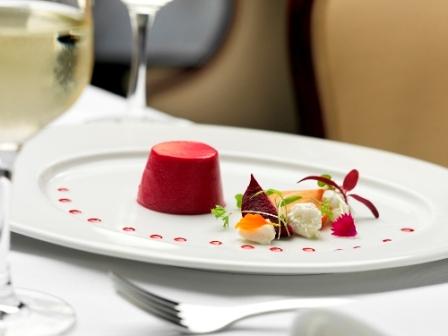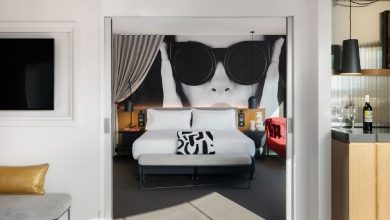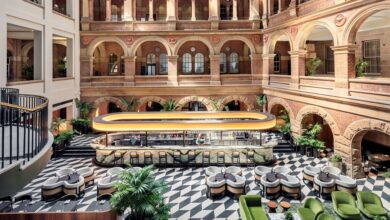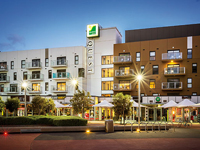
Hotel ‘rejuvenation’ imperative to remain competitive
The focus may be on new-builds in Australia’s largest-ever hotel development boom, but owners of existing hotel stock can fight back through clever re-invention of their product and their image.
With an estimated 70 new hotels or serviced apartment projects in the pipeline across the country, the flip-side for hotel owners is that there is a vast number of 20 – 40 year old hotels that will suddenly be competing with the bright new kids on the block.
It has happened before – after the late 1980s and Bicentennial hotel booms – and at the time, many existing hotels failed to hold their own, as new hotels were able to cannibalise the market and dictate terms, leaving hotels that hadn’t invested in refurbishments either to slash rates or endure a number of fallow years.
However, recent trends have shown that through clever residential re-design of guest rooms and the launch of innovative concepts, such as enhancements to food and conference offerings, existing hotels can remain competitive and build new markets.
Creating new from old
The cost of land in many cities has meant that green-field hotel developments in CBD areas have become prohibitive, if not impossible, which has led to a wave of hotel developments utilising existing buildings, from heritage offices occupied by premiers and government departments to more mundane office blocks and former hotels that have exceeded their use-by dates.
Hotels such as QT Sydney, the Primus Hotel in Sydney and Perth’s the Como The Treasury hotel are recent examples of developers creating style-driven hotels out of central city landmark buildings. There have also been economy-style hotels developed out of under-performing property assets, with the Tank Stream Hotel commanding a prominent site in central Sydney thanks to the development costs saved through converting an existing building.
But the greatest trend occurring in the hotel property sector is the re-invention of existing hotels through substantial refurbishments or the launch of completely new concepts.
Refurbishing, re-launching and regeneration
Hotels don’t have to be down at heel to benefit from major re-inventions. Sydney’s Park Hyatt was already commanding Australia’s highest room rates when it closed for almost a year, redesigning all the rooms, restaurants and public areas, and adding some additional $16,000 per night presidential suites to re-assert its position as Australia’s best hotel.
The famed Sydney Observatory Hotel was re-born as The Langham, Taj’s Blue Hotel in Sydney became Ovolo, the Hilton on the Park in Melbourne was re-launched as the Pullman, Lennons Plaza in Brisbane provided the shell for the launch of the first Next hotel in the world, and in the ultimate signal that everything old can be new again, the PARKROYAL Darling Harbour was created out of a Crowne Plaza, which had originally been a PARKROYAL.
Refurbishments adding value
Sydney’s first international hotels – the Hilton and Wentworth – were seriously in need of makeovers by the time of the new millennium, and over the past decade both hotels have re-invented themselves by introducing new restaurant concepts, opulent club lounges, and state of the art conference centres.
JLL Hotels & Hospitality Group was commissioned to project-manage the upgrade of conference facilities of the Hilton Sydney and the Sofitel Sydney Wentworth to ensure they retained their competitive edge with the new state-of-the-art International Conference Centre scheduled to open at the end of 2016.
“The strategy should be relatively straight-forward: if conferencing delivers the highest accommodation and F&B returns for a hotel, then it is essential that the hotel offers a premium level of conferencing facilities,” says Ross Beardsell, JLL Hotels & Hospitality Group’s Senior Vice President – Asset Management.
“Other hotels in regional and resort areas have added new convention facilities to diversify the market so that they are not reliant on leisure travel over holidays and weekends.
“Quality F&B is becoming an increasingly important component in hotels. This could mean opening a signature restaurant that is operated by a celebrity chef, such as Rick Stein at Bannisters, Peter Kuruvita’s restaurant at the Sheraton Noosa and Luke Mangan’s Glass at the Hilton Sydney. These restaurants provide even greater incentive to stay at the hotels, while the reputation of the chefs adds star quality to the overall hotel experience.
“JLL recently undertook a project at the Holiday Inn Perth where we worked on moving the restaurant from the first floor to street-level to take advantage of the vast amount of walk-past business in the heart of the CBD. The cafe will operate almost as a stand-alone venue competing with other specialty restaurants & bars in the area, while the space previously occupied by the restaurant on the first floor is being converted to four guest rooms, which will produce a far stronger bottom-line result for the owners.
“Existing hotels considering refurbishments can consider using a bespoke designer to provide a very distinctive feel. New boutique hotels such as The Alex Hotel in Perth, Halcyon House in Cabarita (Tweed Coast) and Bannisters by the Sea in Mollymook have all managed to transform relatively ordinary buildings into high-yielding luxury accommodation through providing distinctive interior design and services, with unique food and beverage signature moments.
“Hotel renovations today need to be more targeted, with a selective focus based on ‘doing more with less.’ This will mean concentrating on areas that will deliver the highest return, whether it be technology upgrades for corporate hotels, enhancements in design, lighting and technology for conference venues, investment in spa and leisure facilities in resort hotels, or leasing prime street frontage for well-located city and urban hotels
“Lobbies these days are less about looking grand, but empty, and more about creating the right ambience for guests to enjoy creative in-hotel restaurants and bars. Even limited service hotels are looking to make their lobbies more ‘liveable’, with CitizenM’s revolutionary integrated lobby designs leading the way.
“As existing hotels look to compete with the ‘new kids on the block’, renovations will be conducted with a much keener eye on ROI than in the past. The renovations will need to incorporate operational areas such as energy cost savings and technology delivery, while efficiency in the scheduling and management of the refurbishment process will be crucial to ensure minimum revenue displacement.
“With efficiency a critical component of renovations, project managing the process can significantly reduce costs and deliver the best outcome. Once a concept has been agreed upon, a project manager can organise the construction and procurement schedules, ensure budget and schedule validation, enforce check points throughout the refurbishment cycle, and make sure that the owner’s refurbishment and financial objectives are met.
“There will always be a temptation to resist the disruption caused by renovations by saying ‘if it ain’t broke, don’t fix it’, but with corporate and leisure travellers being able to take advantage of a vast new pipeline of hotel accommodation across the country over the next few years, hotels that want to remain competitive will need to regularly upgrade their product. Money made and retained when the sun has been shining needs to be invested back into the asset to protect for that inevitable rainy day.”

AccomNews is not affiliated with any government agency, body or political party. We are an independently owned, family-operated magazine.







